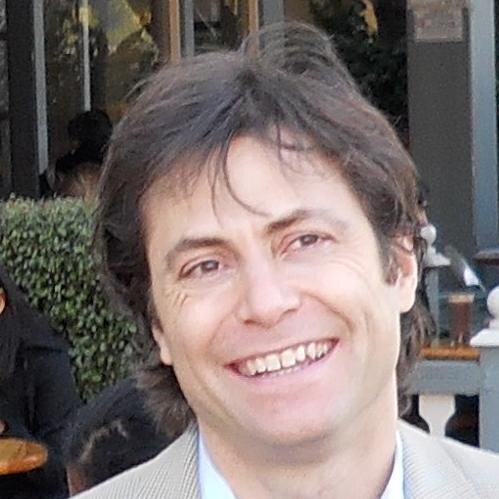
Kibo.0x | StructuralLabs
@kibo_osu
Followers
279
Following
11K
Media
39
Statuses
1K
AI/ML developer, scientist, Bayesian | Macro and defi quant | PhD, former computational systems biologist | @PriorsCapital.io きぼ
Joined January 2020
Finance is our vehicle, but the destination is of greater importance. We are scientists, and few questions warrant more attention than formalizing the path of progress itself. How do we step outside the distribution of knowledge?
1
2
4
The textbook lineage of the statistical–predictive learning paradigm: Vapnik → Hastie/Tibshirani/Friedman → Bishop → MacKay → Goodfellow/Bengio/Courville → Sutton/Barto
0
0
1
People really underestimate how deeply this school of thought has shaped a generation of AI researchers
2
0
1
I am also not saying that there are no researchers who have worked on these questions; for example, Friston, Albantakis, Hoel, Danks, and others in theoretical and computational neuroscience. The same applies in AI research, with Schölkopf, Bareinboim, etc.. However, the
1
0
1
People seem to misunderstand my post as pointing out insufficiencies in Pearl’s framework. On the contrary, the current formalisms for CI have been so wildly successful in guiding proper scientific practices in medicine and economics that much of the theoretical research focus
I agree that the gap between the formalism of causal reasoning and the embodied process of learning causal structure in nature is largely underexplored. However, billions of dollars are invested every year in health care and economic policies, and these applications can benefit
1
0
1
‘Imagine’ thinking that the brain’s capacity to imagine counterfactuals is merely a construct of communication. There’s a poetic irony in how those inspired by @yudapearl’s causal revolution often mirror the same blindness toward neuroscience, mind, and consciousness that
@soboleffspaces @yudapearl This feels like the social version of the same free lunch argument. Organisms use causal knowledge at a much simpler level of adaptive behavior; before adding the complexity of social dynamics and knowledge exchange, we should take seriously the challenge of understanding how
1
0
1
I agree that the gap between the formalism of causal reasoning and the embodied process of learning causal structure in nature is largely underexplored. However, billions of dollars are invested every year in health care and economic policies, and these applications can benefit
I’m obviously not holding you (@yudapearl) accountable for the entire CI field, and I deeply appreciate the effort to formalize causal reasoning as a framework for science and applied inference. I also personally appreciate the hard hand you’ve taken to make these views
3
5
18
My plea is that you, the CI field, devote 30% of the energy spent arguing with clinicians and econometricians over trivial problems toward engaging with statistical learning theorists and AI researchers.
0
0
1
I’m obviously not holding you (@yudapearl) accountable for the entire CI field, and I deeply appreciate the effort to formalize causal reasoning as a framework for science and applied inference. I also personally appreciate the hard hand you’ve taken to make these views
I cannot comments about areas in which I have no knowledge, eg. experimental design. I have no doubt that experts of design have wisdom and knowledge to accomplish what the set out to do, but I have not been able to understand what their research question is, primarily because
2
2
5
Imagine a world where science didn't take Popper's demarcation criterion (falsification) literally, and instead followed a Bayesian epistemology guided by structural invariants and probabilistic inference. A world where scientific standards were epistemically directional, and
0
0
1
One thing I’m curious about is the distributional properties of the Bitcoin network. Is it scale-free (2 < γ < 3)? Scale-free networks are known for their robustness and emergent stability compared to hierarchical or modular ones. I wonder how the network topology reflects an
1
1
0
Very sad and impacted over today’s tragic news in the chess world. I know first hand how taxing it is on your health to spend years pushing yourself towards perfection in a craft where you’re under constant scrutiny by others. Be kind to the people chasing excellence. You never
0
0
2
I find this quite beautifully said and described.
@S_Surprenant I mostly agree, but economists sometimes overstate how “special” their field is. Preferences and opportunity costs still reduce to indexical relations over sets, or mappings between states and actions. That’s not fundamentally different from how physics or any other quantitative
1
2
4
The issue isn’t deep learning itself, or transformers and LLMs for that matter. The challenge is that most learning theory research remains oblivious to the core problem: causal learning → counterfactual reasoning → OOD inference. The real technical challenge lies in enabling
@kibo_osu deep learning isn't the only thing that exists
1
0
1
AGI will be reached when models can reason across counterfactuals, design experiments, and run their own tests, not when they perform well on human evals. This is only a marketing tool for tech companies.
I'm sick of hearing tech lobbyists say they won't worry about AGI because they can't define it: we can!
0
0
0
Statisticians acting like you can just pick a good theory out of an LLM like it’s a Bayesian hat, test it, and make a new draw if it doesn’t work; that is peak AI delusion. Let’s find a path toward causal reasoning and out-of-distribution inference first.
Not entirely. You need theory to decide what experiment to run next, and you need theory to fuse together the findings of many experiments.
0
0
1
+1/ By taking these network principles seriously, generalizing them across growth modalities, and formalizing the link between network participation dynamics, tokenomics, and capital flow, we’ve been able to expand this framework to study the broader #crypto market. This isn’t
0
0
2
For the few who occasionally read or follow my posts on Bitcoin and crypto, what I’m talking about is the following. In short, Gio (@Giovann35084111) identified that the growth of Bitcoin’s network participants can be described by dk(t)/dt = (r/t) · k(t) This growth model is
These Bitcoin quantile models surfacing recently are great for marketing, but have no utility for managing funds across macro cycles. Ultimately, what they’re doing won’t work. You can’t model the full return distribution from age alone. Sure, you can fit historical data; but
3
0
2
I whole heartedly agree with @Giovann35084111 that without understanding the mechanistic basis for these models, you won’t get anything off the ground. However, the mechanistic basis for expanding the power law model to higher-order price fluctuations must be causally invariant.
0
0
1
These Bitcoin quantile models surfacing recently are great for marketing, but have no utility for managing funds across macro cycles. Ultimately, what they’re doing won’t work. You can’t model the full return distribution from age alone. Sure, you can fit historical data; but
All this is so amazing to watch. What Sina describes about PlanC I described about both of them. Sina lacks physics understanding and intuition for example. He has no clue about why power laws are important. Working together is great but one has to be transparent on who
1
0
2





